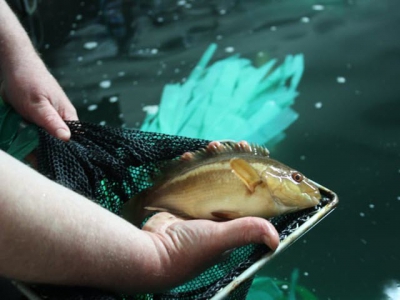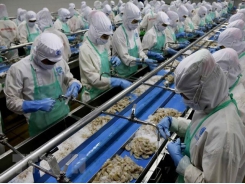Closing the ballan wrasse breeding cycle

Two of Scotland’s leading fish farming companies have helped to close the cycle of ballan wrasse – successfully breeding from farm-raised broodstock.
The project has successfully produced juvenile ballan wrasse from farm-raised broodstock for the first time
Marine Harvest Scotland and Scottish Sea Farms have been working with Stirling’s Institute of Aquaculture for six years to breed wild-caught ballan wrasse (Labrus bergylta) and raise the offspring from egg to adults of reproductive age.
Now, in what is believed to be a world first, those same offspring have produced their own eggs, which have successfully hatched, completing the lifecycle of farming wrasse in a controlled environment.
The team has also gone on to successfully wean the wrasse larvae and fry from live food to a dry diet – another key milestone and one that will give salmon farmers more control over the health and nutrition of farmed wrasse.
Longer term, it’s hoped the breakthrough will help meet the growing demand for cleaner fish as Scotland’s salmon farmers increasingly seek to control sea lice through non-medicinal, environmentally-friendly approaches.
Currently, the majority of wrasse used as cleaner fish is wild-caught in accordance with guidelines specified by Marine Scotland, RSPCA Assured and local fishery boards to ensure it is done sustainably. However, it is the sector’s ambition to become self-sustaining and use only farmed stocks of cleaner fish – a goal that is now within its grasp.
Marine Harvest Scotland’s Hatchery Manager, Paul Featherstone, says: “Ballan wrasse provide highly effective, highly natural sea lice control and as such are in huge demand. With this breakthrough, we now have proven procedures for breeding, weaning and rearing wrasse, which will both help ensure farmers have a more secure, controllable supply and reduce reliance on wild stocks.”
Scottish Sea Farms’ Head of Fish Health, Ralph Bickerdike adds: “These landmark breakthroughs are the result of many years of collaborative research, involving a significant investment of time and money by farmers and academic partners intent on developing natural solutions to the control of sea lice.”
The two companies entered into the multi-million pound collaboration back in 2011 with support from Innovate UK (formerly the Technology Strategy Board), then more recently the Scottish Aquaculture Innovation Centre and feed specialist BioMar. Under the terms of the collaboration, all insights gleaned will be shared with the wider sector for the common good.
Có thể bạn quan tâm
Phần mềm

Phối trộn thức ăn chăn nuôi

Pha dung dịch thủy canh

Định mức cho tôm ăn

Phối trộn phân bón NPK

Xác định tỷ lệ tôm sống

Chuyển đổi đơn vị phân bón

Xác định công suất sục khí

Chuyển đổi đơn vị tôm

Tính diện tích nhà kính

Tính thể tích ao hồ



 Vietnam should boost domestic consumption of aquatic products:…
Vietnam should boost domestic consumption of aquatic products:…  Nine-month seafood exports estimated at 6.4 billion USD
Nine-month seafood exports estimated at 6.4 billion USD